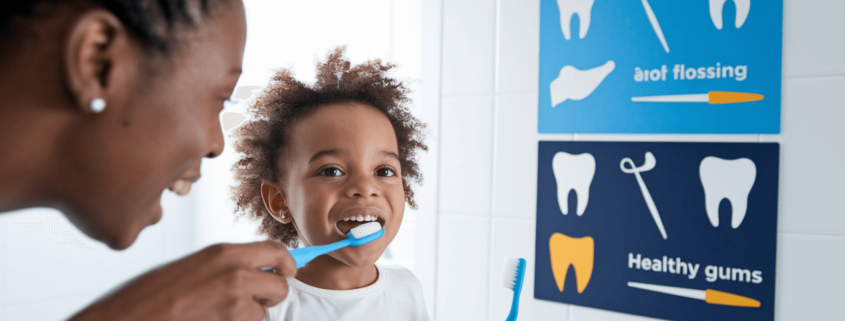10 Dental Hygiene Tips Every Parent Should Teach Their Kids
Good dental habits don’t grow on trees—they start at home. Teaching your kids how to care for their teeth early sets the tone for a lifetime of healthy smiles. Neglecting these habits? That’s an open invitation to cavities, gum issues, and unnecessary dentist visits (and bills).
So how do you make dental hygiene fun, engaging, and actually stick with your little ones? Let’s dive into 10 powerful kids dental hygiene tips that even the pickiest toddlers can get behind.
TLDR – Quick Guide
- Start early, even before teeth appear.
- Make brushing fun with games and songs.
- Set a two-minute timer—twice a day, every day.
- Don’t forget to floss once teeth touch.
- Lead by example—your habits matter.
- Limit sugary snacks and drinks.
- Teach the importance of regular dental checkups.
- Let kids choose their toothbrush and paste.
- Reward consistency with a simple chart.
- Make dental care a bonding moment.
Detailed Breakdown
1. Start Early—Way Before Teeth Show Up
You don’t need teeth to begin oral care. Wipe your baby’s gums with a soft cloth after feeding. Once teeth arrive, switch to a soft-bristled brush. Early routines build lasting habits (AAPD).
2. Make Brushing a Game
Use songs, apps, or storytelling. Think: “The Plaque Monster is back, and only your superhero brush can defeat it!” It’s not just fun—it’s motivating.
3. Two Minutes, Twice a Day
This isn’t negotiable. Use a timer, sandglass, or a YouTube brushing video. The American Dental Association recommends two minutes of brushing in the morning and before bed (ADA).
4. Introduce Flossing Early
Once your child has two teeth that touch, it’s time to floss. Those tight spaces are prime real estate for cavities. Floss picks can be easier for small hands.
5. Be the Role Model
Kids mimic what they see. Brush and floss alongside them. If they see you slacking, they’ll follow suit.
6. Watch the Sugar
Sticky candies, juices, and sodas wreak havoc. Swap them for water, crunchy fruits, and sugar-free gum (if they’re old enough). The CDC reports that over 52% of kids have had a cavity in their baby teeth (CDC).
7. Normalize Dental Visits
The first dental visit should happen by age 1 or within six months of the first tooth. Make it a positive experience—no threats, no bribes.
8. Let Them Choose Their Tools
Whether it’s a Batman toothbrush or bubblegum-flavored paste, giving your child a say makes them more invested.
9. Use a Reward Chart
Track daily brushing and flossing. Offer non-sugary rewards like extra storytime, stickers, or picking a weekend activity.
10. Make It a Bonding Ritual
Talk about the day while brushing. Laugh over foam-filled grins. Create an emotional connection to oral care—not just a chore.
Key Takeaways
- Start dental hygiene habits from infancy.
- Use engaging methods to make brushing fun and effective.
- Flossing is just as critical as brushing.
- Kids follow what they see—be a brushing role model.
- Regular dental visits should be stress-free and start early.
FAQs
1. At what age should my child start brushing their teeth?
You should start brushing as soon as your child’s first tooth appears. Use a rice-sized smear of fluoride toothpaste until age 3, then a pea-sized amount after that.
2. How do I know if my child is brushing correctly?
Supervise their brushing until at least age 7. Make sure they cover all surfaces and brush for a full two minutes.
3. Is fluoride safe for kids?
Yes, in the right amount. Fluoride strengthens enamel and prevents cavities. Just ensure they use the appropriate toothpaste quantity for their age to avoid overexposure.
4. How often should kids visit the dentist?
Every six months, unless advised otherwise. Regular visits help catch issues early and get kids comfortable with dental care.
5. What if my child refuses to brush?
Make it playful, not punitive. Try letting them brush your teeth, or use a brushing app with animations. Consistency and creativity go a long way.




Leave a Reply
Want to join the discussion?Feel free to contribute!